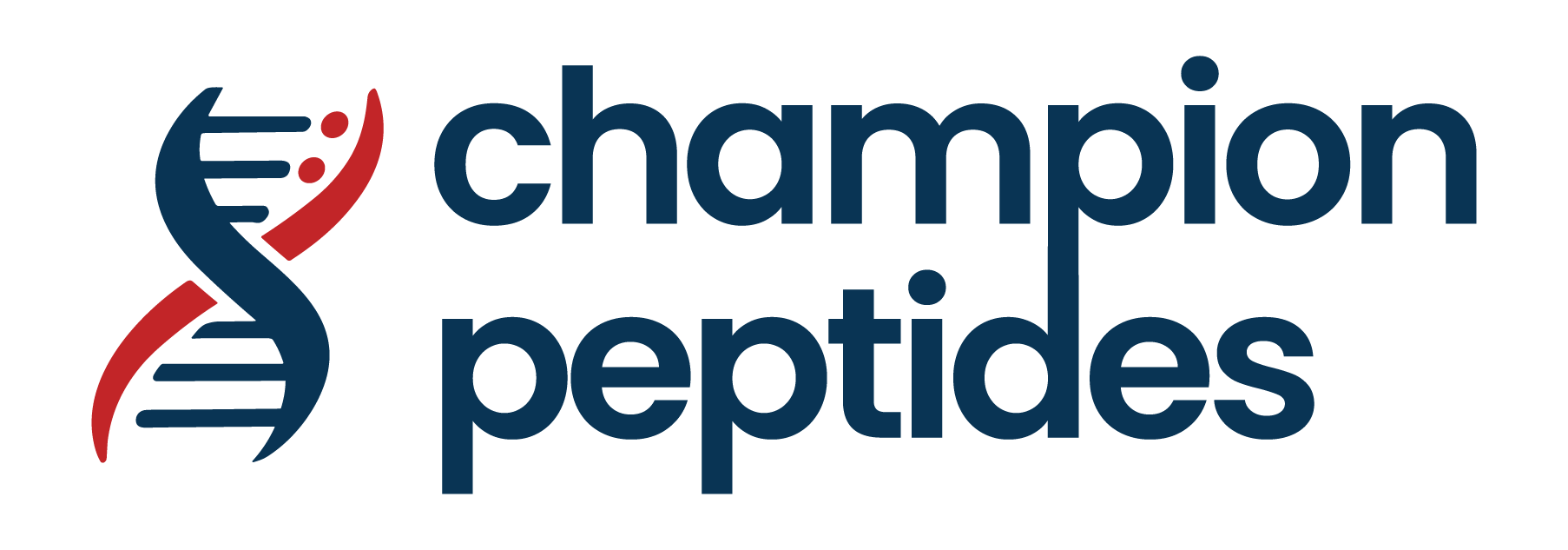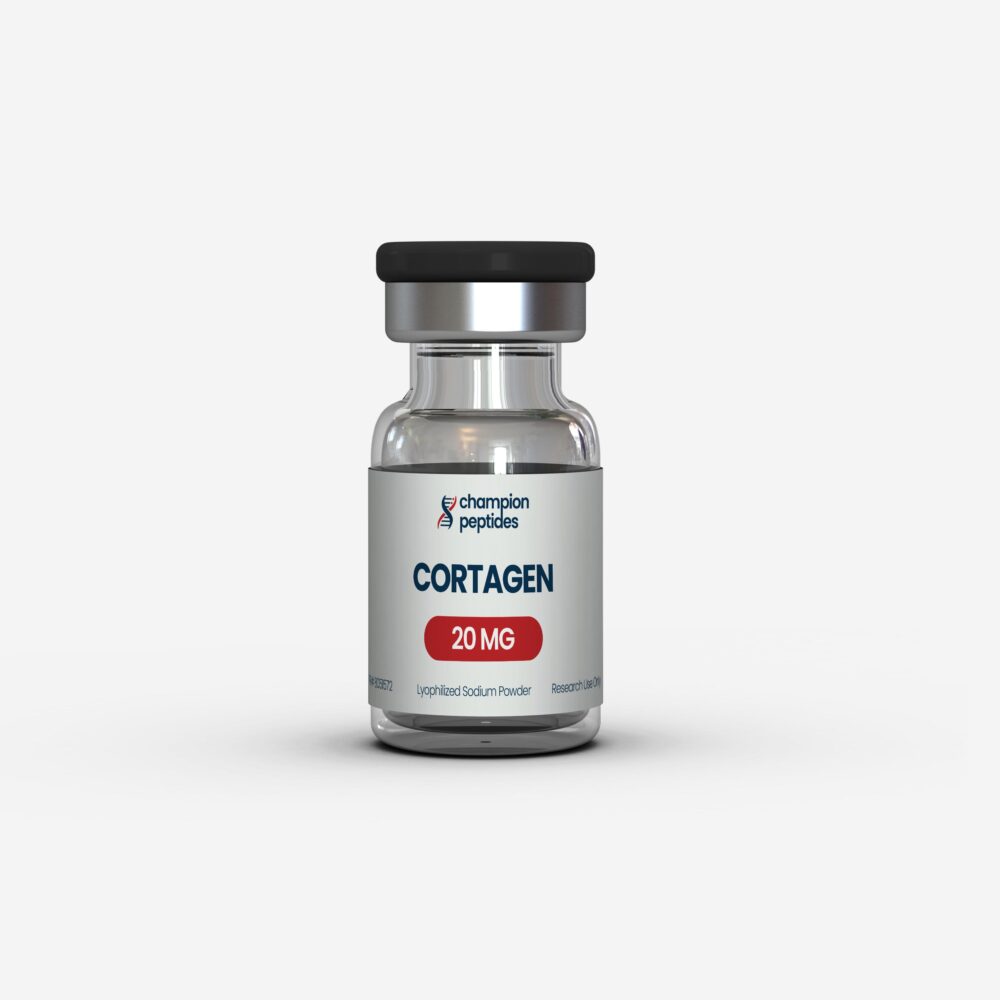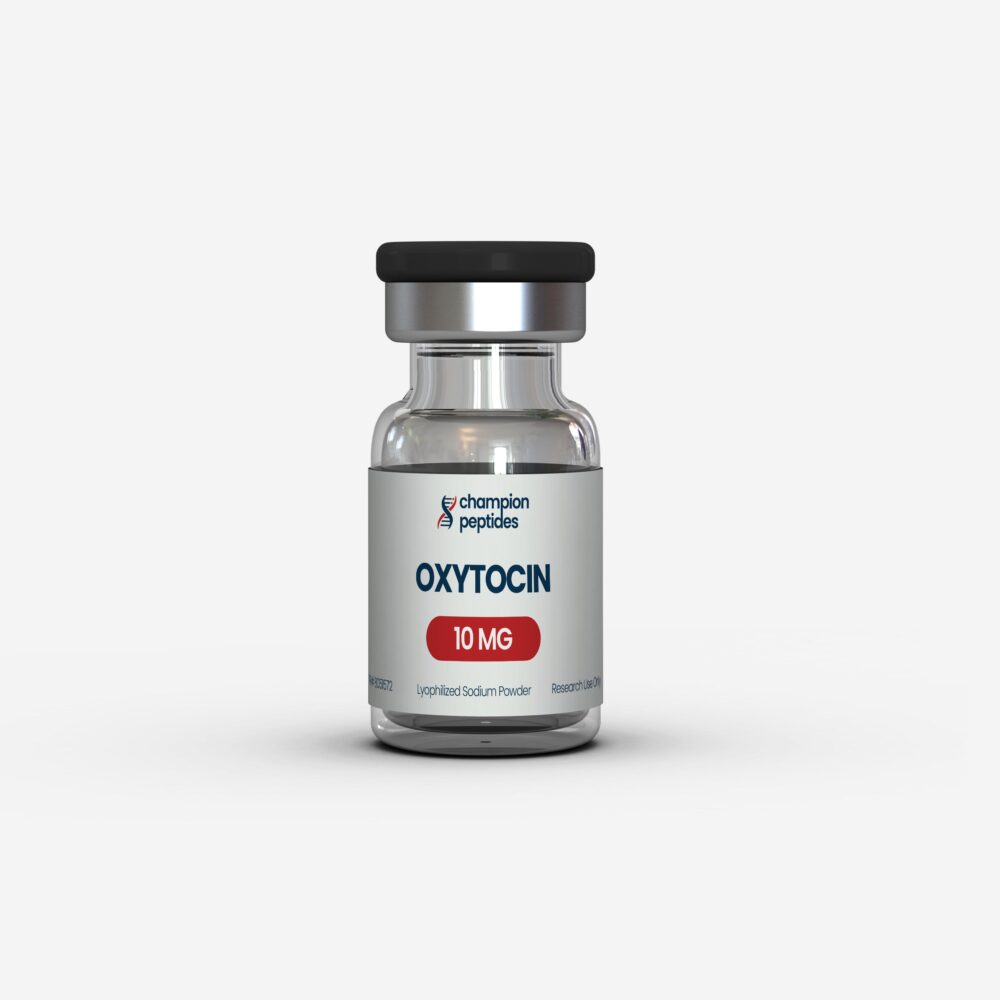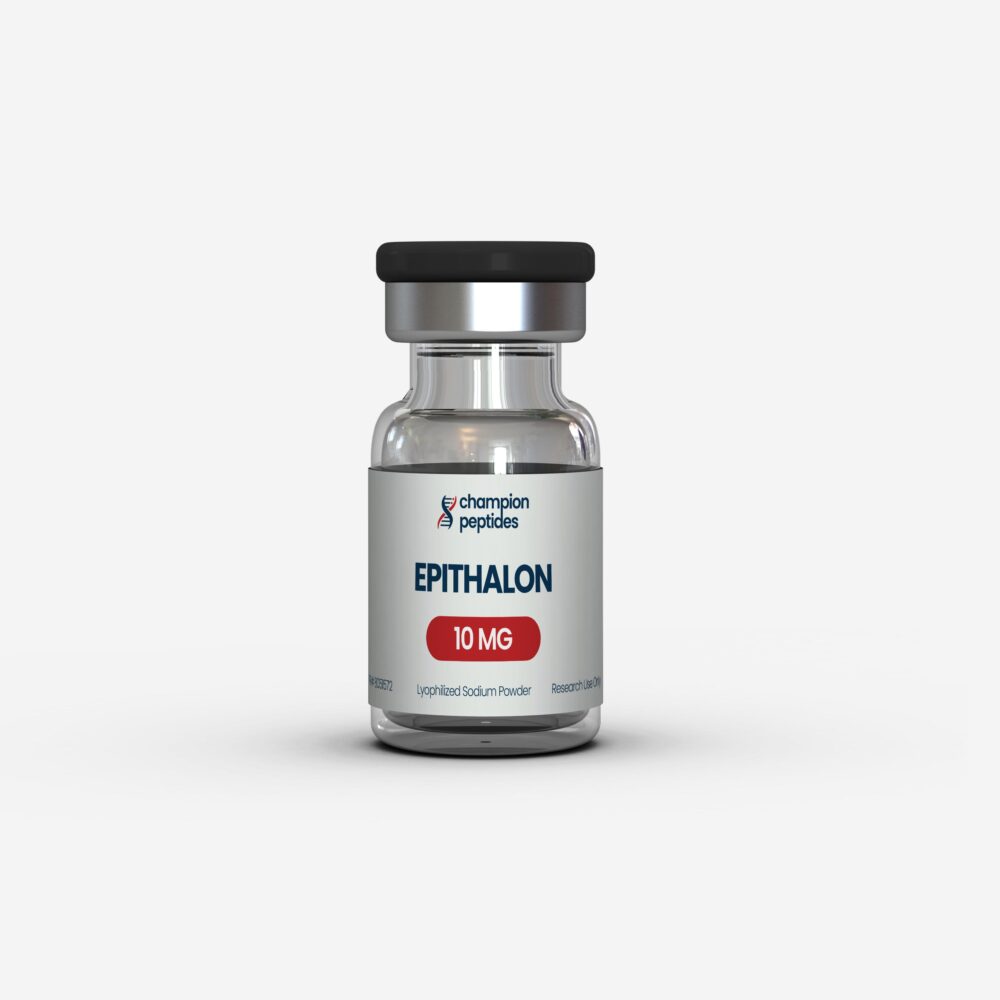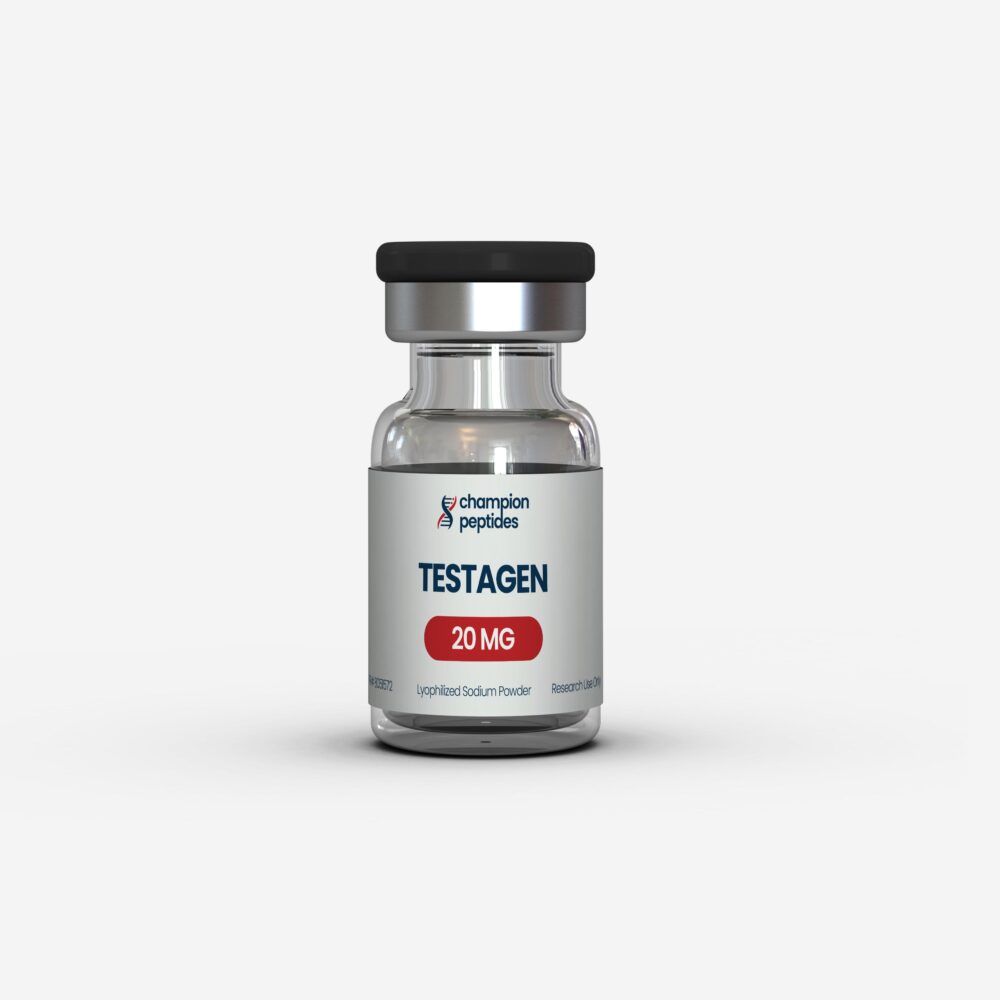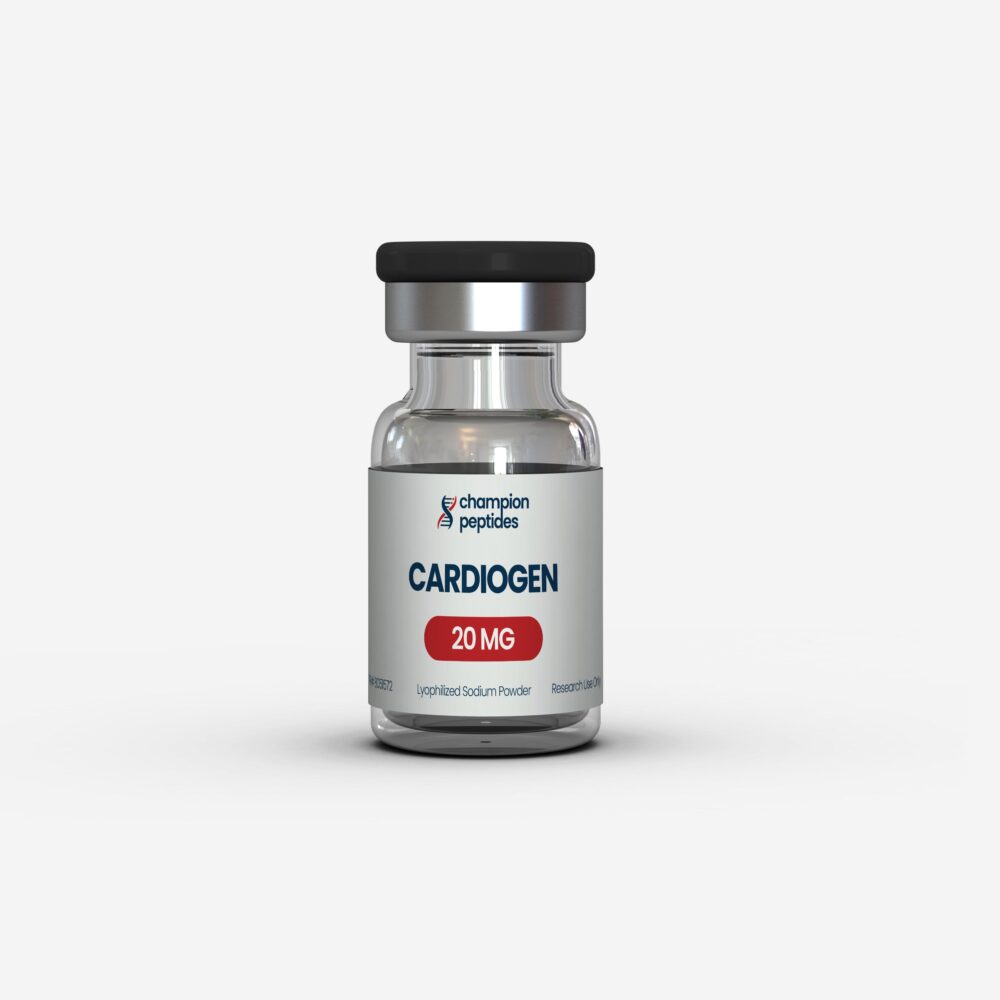- Phase 2 trials demonstrate up to 24.2% mean weight loss after 48 weeks in obesity research
- Triple mechanism targets GLP-1, GIP, and glucagon receptors simultaneously for enhanced metabolic effects
- 82% reduction in hepatic steatosis observed in clinical studies with metabolic improvements
- Eli Lilly’s comprehensive Phase 3 TRIUMPH program currently advancing through regulatory pathways
- Superior efficacy compared to existing dual agonists while maintaining acceptable safety profile
Contents
Scientific Overview and Mechanisms
Retatrutide represents a paradigm shift in metabolic research as the first unimolecular triple agonist targeting glucagon-like peptide-1 (GLP-1), glucose-dependent insulinotropic polypeptide (GIP), and glucagon receptors simultaneously. This innovative peptide compound, designated as LY3437943, demonstrates unprecedented efficacy in laboratory investigations focusing on weight management and metabolic dysfunction.
The scientific foundation of this compound builds upon decades of incretin research, where researchers have explored how gut-brain axis signaling influences appetite regulation and energy homeostasis. Unlike traditional single-target approaches, these peptides leverage multiple receptor pathways to achieve synergistic effects that surpass individual component activities. The comprehensive peptide research portfolio continues expanding as scientists investigate novel multi-receptor targeting strategies.
Laboratory studies reveal that retatrutide activates adenylyl cyclase pathways through all three target receptors, resulting in elevated cyclic adenosine monophosphate (cAMP) levels. This mechanism promotes insulin secretion, delays gastric emptying, reduces food intake, and enhances energy expenditure through glucagon-mediated pathways. The glucagon component specifically stimulates hepatic fat oxidation and mitochondrial biogenesis, distinguishing it from dual agonist alternatives.
Recent molecular dynamics simulations demonstrate that the compound maintains stable binding conformations across all target receptors while exhibiting improved pharmacokinetic properties. The peptide structure incorporates strategic modifications that enhance proteolytic stability and extend half-life duration, making it suitable for once-weekly administration protocols in research settings.
Retatrutide Research Dosage Protocols
Clinical research investigations have established comprehensive dosing protocols that demonstrate the compound’s dose-dependent efficacy across multiple metabolic parameters. Laboratory protocols reveal optimal therapeutic windows for different research applications and populations.
| Dose Range | Population | Primary Outcomes | Study Duration | Safety Profile |
|---|---|---|---|---|
| 0.5-1 mg | Initial dose escalation | Tolerability assessment | 4-8 weeks | Minimal GI effects |
| 4 mg | Type 2 diabetes | 8.7% weight reduction | 36 weeks | Moderate nausea (15%) |
| 8 mg | Obesity without diabetes | 17.3% weight reduction | 48 weeks | Transient GI symptoms |
| 12 mg | Obesity research | 24.2% weight reduction | 48 weeks | Manageable side effects |
Research protocols indicate that dose escalation strategies significantly impact tolerability outcomes. The standard laboratory approach involves 4-week intervals between dose increases, allowing physiological adaptation to minimize gastrointestinal reactions. Investigators have noted that advanced peptide formulations require careful titration to optimize the therapeutic index.
Split dosing investigations reveal enhanced efficacy when weekly doses are divided into bi-weekly administrations. Community research observations suggest that 2.5 mg twice weekly provides superior appetite suppression compared to single 5 mg weekly injections, though formal comparative studies remain ongoing.
Laboratory studies examining retatrutide dosage protocols demonstrate significant improvements in multiple metabolic markers. At 12 mg weekly doses, research participants achieved mean HbA1c reductions of 2.2%, with 82% reaching target glycemic levels below 6.5%. Concurrent improvements included blood pressure reductions, lipid profile optimization, and substantial decreases in waist circumference measurements.
The compound’s unique pharmacokinetic profile allows for flexible dosing adjustments based on individual response patterns. Research applications require careful monitoring during initial titration phases, with particular attention to gastrointestinal tolerance and metabolic response rates.
Retatrutide Research Comparison Analysis
Comparative research investigations position this triple agonist compound against existing therapeutic options, revealing significant advantages in efficacy and mechanism diversity. Laboratory comparisons with established treatments provide valuable insights into relative therapeutic potential.
| Parameter | Retatrutide | Tirzepatide | Semaglutide | Research Significance |
|---|---|---|---|---|
| Receptor Targets | GLP-1/GIP/Glucagon | GLP-1/GIP | GLP-1 | Enhanced metabolic pathway activation |
| Weight Loss (48 weeks) | 24.2% | 22.5% | 17.4% | Superior efficacy outcomes |
| Administration | Weekly | Weekly | Weekly/Daily | Comparable convenience |
| Hepatic Fat Reduction | 82% | 65% | 45% | Enhanced liver health benefits |
| Development Phase | Phase 3 | Approved | Approved | Advanced clinical progress |
| Muscle Preservation | Enhanced | Moderate | Limited | Improved body composition |
| GI Tolerability | Moderate | Good | Moderate | Acceptable safety profile |
Laboratory investigations reveal that retatrutide vs tirzepatide comparisons demonstrate the incremental benefits of glucagon receptor activation. The additional glucagon component enhances hepatic fat oxidation and energy expenditure beyond what dual agonist mechanisms achieve. Related research compounds explore similar multi-target approaches with varying receptor specificity profiles.
Mechanistic research indicates that the triple agonist approach addresses limitations observed with single and dual receptor targeting strategies. While semaglutide provides robust GLP-1 activation, it lacks the metabolic flexibility that GIP and glucagon pathways contribute. Tirzepatide improves upon single-target approaches but misses the hepatic and thermogenic benefits of glucagon signaling.
Research community perspectives highlight that comparative analysis must consider long-term metabolic outcomes beyond initial weight loss responses. Laboratory studies suggest that the compound’s multi-pathway activation may provide sustained benefits and reduced adaptation compared to single-target approaches.
Clinical Research Evidence
Recent Studies (2024-2025)
Comprehensive clinical investigations provide robust evidence supporting retatrutide’s therapeutic potential across multiple metabolic applications. Recent research publications demonstrate consistent efficacy across diverse patient populations and research protocols.
The landmark Phase 2 obesity study (Jastreboff et al.) enrolled 338 participants with obesity or overweight without diabetes, comparing multiple dose levels against placebo over 48 weeks. Results demonstrated dose-dependent weight reductions reaching 24.2% with the highest dose, establishing new benchmarks for pharmacological weight management research. The study protocol included comprehensive metabolic assessments, body composition analysis, and detailed safety monitoring. Complementary research peptides are being investigated for synergistic metabolic applications.
Goldney et al. (PMID: 40741227) provide comprehensive analysis of triple agonism therapeutic strategies, positioning this compound as the most advanced candidate in its class. Their systematic review examined Phase 2 data across both obesity and type 2 diabetes populations, confirming significant improvements in multiple cardiometabolic parameters including blood pressure, lipid profiles, and hepatic steatosis measurements.
The appetite and eating behavior study by Kanu et al. (PMID: 40916752) investigated mechanisms underlying weight loss efficacy in 275 adults with type 2 diabetes. Research findings revealed significant reductions in self-reported appetite, hunger, and prospective food consumption compared to placebo groups. Participants receiving 8-12 mg doses demonstrated substantial improvements in perceived hunger and dietary disinhibition scores, with changes correlating strongly with weight reduction outcomes.
Kidney parameter research by Heerspink et al. (PMID: 40630318) examined renal effects across 619 participants with varying baseline kidney function. Post-hoc analysis revealed encouraging renal protective effects, with reduced urine albumin-to-creatinine ratios and improved estimated glomerular filtration rates in obesity populations. These findings suggest potential applications beyond metabolic research into nephroprotective investigations.
Wen et al. (PMID: 40726454) investigated lipid metabolism mechanisms through ANGPTL3/8 complex analysis. Their research demonstrated that glucagon receptor agonism reduces circulating ANGPTL3/8 concentrations, contributing to observed triglyceride and LDL-cholesterol reductions. This mechanistic insight provides valuable understanding of how metabolic research peptides influence lipid homeostasis pathways.
Cardiovascular research by Basile et al. (PMID: 40899050) conducted systematic meta-analysis across 85 randomized controlled trials encompassing 90,977 participants. Their investigation revealed that triple agonists produced the most significant blood pressure reductions (6.6 mmHg systolic, 2.1 mmHg diastolic) among incretin-based therapies, supporting cardiovascular benefit potential.
Sinha and Ghosal (PMID: 40685589) performed Bayesian network meta-analysis comparing efficacy and safety across 19 randomized controlled trials. Their analysis confirmed superior weight loss efficacy with acceptable adverse event profiles, though noting increased gastrointestinal side effects compared to dual agonist alternatives.
Research Community Perspectives
Scientific community discussions reveal significant interest in triple receptor agonist mechanisms and their potential applications across diverse research contexts. Research interest indicators suggest growing enthusiasm for multi-target therapeutic approaches that address complex metabolic dysfunction through integrated pathway modulation.
Laboratory investigators frequently discuss the compound’s unique position in addressing limitations of existing therapeutic options. Community research observations highlight particular interest in its potential for preserving lean body mass during weight reduction phases, a critical limitation noted with other weight management approaches. The glucagon component’s role in promoting muscle protein synthesis and metabolic flexibility generates substantial research discussion.
Research communities emphasize the compound’s potential applications beyond traditional metabolic research. Investigators explore connections between metabolic health and cognitive function, noting community reports of improved focus and mental clarity during treatment protocols. These observations align with research into cognitive enhancement peptides and their metabolic interconnections.
Scientific discussions frequently address questions about optimal research protocols and combination approaches. Community perspectives suggest interest in exploring synergistic applications with other metabolic research compounds, particularly those targeting complementary pathways involved in energy homeostasis and body composition optimization.
The research community particularly values the compound’s comprehensive metabolic profile, addressing multiple aspects of metabolic dysfunction simultaneously rather than requiring multiple therapeutic interventions. This holistic approach resonates with current research trends emphasizing systems biology approaches to complex metabolic disorders.
Development Timeline and Research Availability
Eli Lilly’s comprehensive development program demonstrates substantial commitment to advancing this innovative therapeutic approach through rigorous clinical investigation. The company’s Phase 3 TRIUMPH program represents one of the most extensive metabolic research initiatives currently underway, with multiple studies examining efficacy and safety across diverse populations.
Current research availability focuses primarily on clinical trial participation through established research centers and academic institutions. The ongoing Phase 3 program includes multiple studies examining cardiovascular outcomes, long-term safety, and efficacy across different patient populations. Eli Lilly’s development timeline suggests potential regulatory submissions within the next 2-3 years, dependent on successful Phase 3 completion.
When will retatrutide be available for broader research applications remains dependent on regulatory approval processes and manufacturing scale-up capabilities. The complex synthesis requirements for triple agonist peptides present unique challenges compared to simpler therapeutic compounds, though Eli Lilly’s established peptide manufacturing infrastructure provides advantages in addressing these technical requirements.
Research institutions currently access the compound through clinical trial protocols and specialized research agreements. The development timeline reflects standard regulatory pathways for novel therapeutic peptides, with additional considerations for the unique multi-target mechanism requiring comprehensive safety evaluation across diverse physiological systems.
Research Applications and Laboratory Access
Laboratory applications of this triple receptor agonist encompass diverse research contexts examining metabolic regulation, energy homeostasis, and therapeutic mechanism investigation. Research protocols require careful consideration of dosing strategies, administration routes, and monitoring parameters to optimize experimental outcomes.
Research institutions investigating metabolic peptide mechanisms frequently explore this compound’s unique triple targeting approach as a model system for understanding complex receptor interactions. Laboratory applications include mechanistic studies examining intracellular signaling pathways, pharmacokinetic investigations, and comparative analysis with existing therapeutic approaches. These research protocols require specialized handling and storage conditions to maintain peptide stability and biological activity.
Investigators examining metabolic research applications often incorporate this compound into broader research programs studying incretin biology and metabolic disease mechanisms. Research protocols typically involve careful dose escalation strategies, comprehensive metabolic monitoring, and detailed safety assessment procedures. Related research peptides may provide complementary investigation opportunities for comprehensive metabolic research programs.
Laboratory access for research purposes requires appropriate institutional oversight and compliance with research use only regulations. Qualified research institutions can explore various formulations and concentrations to support diverse experimental protocols, with particular attention to proper storage conditions and handling procedures to maintain compound integrity.
Research applications continue expanding as investigators explore novel therapeutic mechanisms and potential synergistic combinations with other metabolic modulators. The compound’s unique multi-target profile provides valuable research opportunities for understanding complex metabolic interactions and developing next-generation therapeutic approaches. Metabolic support compounds often complement research protocols examining comprehensive metabolic optimization strategies.
Frequently Asked Questions
What is retatrutide and how does it work in research settings?
Retatrutide is a novel triple receptor agonist that simultaneously activates GLP-1, GIP, and glucagon receptors for comprehensive metabolic research applications. In laboratory investigations, this compound demonstrates unique multi-pathway activation that influences appetite regulation, energy expenditure, and hepatic metabolism through integrated signaling mechanisms. Research protocols focus on understanding these complex interactions for potential therapeutic development, with all applications restricted to qualified research institutions for research use only.
How does retatrutide dosage affect research outcomes in laboratory studies?
Research dosage protocols demonstrate clear dose-dependent relationships across multiple metabolic parameters. Laboratory studies reveal that doses ranging from 4-12 mg weekly produce proportional responses in weight reduction, metabolic marker improvements, and hepatic fat reduction. Research protocols typically employ careful dose escalation strategies over 4-week intervals to optimize therapeutic windows while minimizing adverse effects. All dosing investigations require appropriate institutional oversight and compliance with research use only guidelines.
When will retatrutide be available for expanded research applications?
Retatrutide availability for broader research applications depends on completion of Eli Lilly’s Phase 3 TRIUMPH program and subsequent regulatory review processes. Current timelines suggest potential availability within 2-3 years, though this depends on successful clinical trial outcomes and manufacturing scale-up capabilities. Research institutions currently access the compound through clinical trial participation and specialized research agreements. All current access remains limited to qualified research settings with appropriate oversight.
What makes retatrutide different from tirzepatide in research comparisons?
Retatrutide vs tirzepatide research comparisons reveal that the additional glucagon receptor activation provides enhanced hepatic fat oxidation and energy expenditure benefits. While tirzepatide targets GLP-1 and GIP receptors, retatrutide’s triple mechanism includes glucagon signaling that promotes mitochondrial biogenesis and thermogenic activation. Laboratory studies demonstrate superior weight loss outcomes (24.2% vs 22.5%) and greater hepatic steatosis reduction (82% vs 65%) with the triple agonist approach. Research institutions continue investigating these mechanistic differences for therapeutic development applications.
How much does retatrutide cost for research applications?
Retatrutide research costs vary significantly based on formulation requirements, quantity specifications, and institutional research agreements. Laboratory-grade preparations require specialized synthesis and quality control procedures that influence pricing structures. Research institutions typically negotiate costs through established procurement channels and specialized research suppliers. Current market access remains limited to clinical trial settings and qualified research institutions, with costs reflecting the complex manufacturing requirements for triple agonist peptides.
What are the main research applications being studied with retatrutide?
Primary research applications focus on metabolic disorder investigations, obesity mechanisms, and cardiovascular health research. Laboratory studies examine appetite regulation pathways, hepatic metabolism, body composition optimization, and kidney protective effects. Research protocols also investigate neurological applications, including cognitive function relationships and neuroprotective mechanisms. All research applications require appropriate institutional approval and adherence to research use only guidelines, with investigators exploring diverse therapeutic potential across multiple physiological systems.
How can research institutions obtain retatrutide for laboratory studies?
Research institutions can access retatrutide through clinical trial participation, specialized research agreements, and qualified research suppliers. Laboratory procurement requires appropriate institutional oversight, proper storage capabilities, and compliance with research use only regulations. Investigators must demonstrate appropriate research protocols, safety procedures, and qualified personnel for handling advanced peptide compounds. All procurement must comply with institutional research guidelines and regulatory requirements for peptide research applications.
What safety considerations apply to retatrutide research protocols?
Research safety protocols require comprehensive monitoring for gastrointestinal effects, metabolic changes, and cardiovascular parameters during laboratory investigations. Clinical studies report manageable side effect profiles with appropriate dose escalation strategies and monitoring procedures. Research protocols must include proper handling procedures, storage requirements, and disposal methods for peptide compounds. All safety considerations require institutional review board approval and adherence to established research guidelines for peptide investigation applications.
Can retatrutide be combined with other research peptides in laboratory studies?
Combination research protocols require careful consideration of potential interactions and synergistic effects between different peptide compounds. Laboratory investigations explore complementary mechanisms with metabolic support peptides, neuroprotective compounds, and body composition modulators. Research protocols must account for potential additive effects, monitoring requirements, and safety considerations when combining multiple active compounds. All combination studies require appropriate institutional oversight and comprehensive safety assessment procedures for research use only applications.
Conclusion
Retatrutide represents a revolutionary advancement in metabolic research, offering unprecedented therapeutic potential through its innovative triple receptor targeting mechanism. The comprehensive research evidence demonstrates consistent superiority across multiple metabolic parameters, with Phase 2 clinical trials establishing new benchmarks for pharmacological intervention efficacy. Laboratory investigations continue revealing the compound’s unique ability to address complex metabolic dysfunction through integrated pathway modulation.
The research community’s enthusiasm for this triple agonist approach reflects its potential to transform metabolic disorder research and therapeutic development. Eli Lilly’s comprehensive Phase 3 TRIUMPH program positions this compound for potential regulatory approval within the next several years, contingent on continued demonstration of efficacy and safety across diverse populations.
Research institutions worldwide continue investigating this compound’s diverse applications beyond traditional metabolic research, exploring connections between metabolic health and cognitive function, cardiovascular protection, and hepatic health optimization. The unique multi-target profile provides valuable research opportunities for understanding complex physiological interactions and developing next-generation therapeutic approaches.
As the scientific community advances understanding of this innovative compound, comprehensive research programs continue expanding to explore its full therapeutic potential. The combination of robust clinical evidence, innovative mechanism design, and substantial pharmaceutical industry support positions retatrutide as a landmark achievement in metabolic research and therapeutic development.
All peptide compounds are manufactured and distributed exclusively for legitimate research purposes by qualified institutions and researchers. Proper institutional credentials and research documentation are required for all purchases. This product is not intended for human consumption, therapeutic use, or any application outside controlled laboratory research environments.
